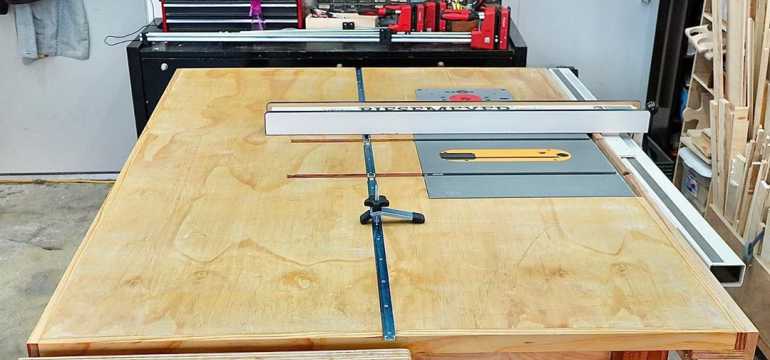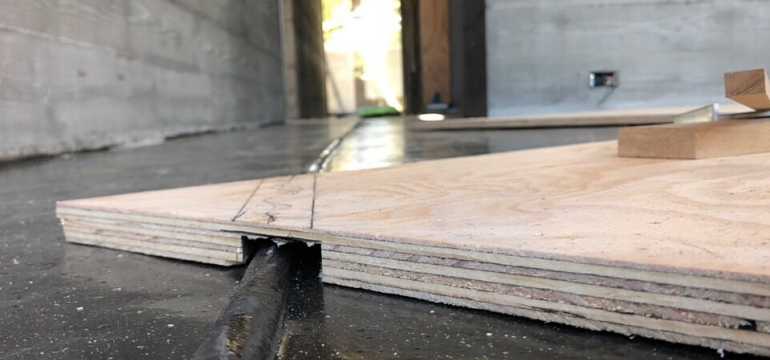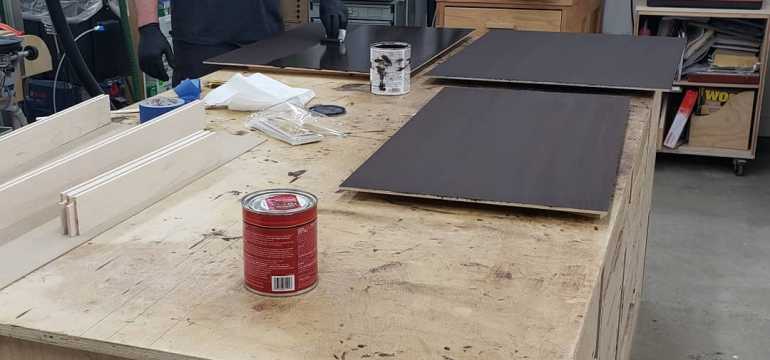If you spend any time researching the different types of wood available at your local lumberyard, you are sure to find luan plywood. It is a relatively inexpensive material that comes in a variety of colors. Thin and easy to work with, this luan plywood serves an important role in many home improvement projects and hobbies. In fact, some homeowners are even installing luan flooring in their homes to create a fresh and updated appearance.
Are you interested in what luan plywood can do for your home? Take a look at some of these frequently asked questions and figure out what you can use luan plywood for at your house.
What is a Luan Plywood?

Luan plywood (sometimes spelled lauan plywood) is hardwood plywood made from tropical trees. These trees are mostly found in the Philippines and other Southeast Asian countries. The plywood that most people are familiar with is typically very thin. Luan plywood underlayment is typically ¼-inch thick, but there are some instances where it is only ⅛-inch thick instead.
When shopping for luan plywood at your local lumberyard, you may notice that there are several different appearances. Luan comes in both red and white colors, depending on the manufacturer and where the tropical trees were harvested. Regardless of which color is on the outside veneer, you will have plywood that performs in a relatively similar manner.
Both red and white luan consists of several veneers that are glued together in layers. Holes, dents, and other imperfections are filled and sanded down so that the final result is a smooth piece of plywood. In the end, luan is relatively soft plywood that is ideal for applications like subflooring supplementation, creating toys, and even creating thin wood panels for walls.
Keep in mind that the surface will be marred with imperfections, so you will want to use it for projects that will be painted or covered in the end.
Is luan plywood waterproof?
Most luan plywood is designed to be used indoors, meaning that it is not waterproof. However, it is possible to find an exterior type of luan that could be used in a shed or another outdoor building project. These are created with different adhesives that better stand up to moisture. Be sure to clarify what type of luan you are looking at with the lumberyard before making a major purchase.
Luan Plywood Underlayment

Many homeowners and those who are in the process of building homes are interested in the idea of using luan in place of traditional plywood subflooring. Luan is readily available and definitely less expensive than traditional plywood or OSB subfloors. The question is really whether or not it will be sturdy enough to hold up to the traffic in your home.
Unfortunately, luan plywood is no substitute for the standard 3/4-inch plywood that most homes require for their subflooring. This doesn’t mean that you cannot use luan as a part of the home building process, though.
Some homeowners have the need to build up their subfloor before they can install new flooring. An extra ¼-inch thick piece of plywood might allow them to run resilient flooring at the same height as their tile, thereby eliminating the need for a bulky transition strip in the doorway. In situations like these, luan flooring really comes to the rescue. Luan under vinyl flooring is a perfectly acceptable use of this product.
It is ideal for use under vinyl because vinyl does not require the use of fasteners to hold the product tight to the subfloor. Unlike hardwood floors, resilient floors tend to click in place for a floating installation. Luan alone cannot hold the fasteners that are required for more traditional hardwood floors.
How Secure Is Luan to the Subfloor?

Are you curious whether the luan is going to be secure enough to withstand all of the heavy traffic in your home? The good news is that luan is extremely secure when fastened to the subfloor properly from the very beginning. You simply have to know how to go about installing it the right way.
Start in the far corner of your room and lay one full sheet of luan down on the ground. It should run perpendicular to the plywood subfloor panel beneath it.
Just like regular hardwood floors and subfloors, you need to account for what moisture will do to the luan. Make sure to leave a small gap around the perimeter of the room to allow room for the luan to expand and contract with exposure to moisture from beneath the home. This moisture can come up through the crawl space or through a concrete slab foundation. The industry standard is a 1/16-inch gap around all exterior and interior walls.
In order to fasten the luan to the subfloor, insert crown staples every six inches across the plane of the luan and every two inches down the edges. This should be adequate to fasten the entire sheet in place so that it does not move much over the course of time.
When you are finished fastening the first sheet of luan flooring, you are ready to place the next one. Make sure to leave a 1/16-inch gap between the wall and the plywood, as well as between the two luan sheets. This should give you plenty of room for the wood to move around without causing buckling issues.
Installing Luan Flooring

Most homeowners use luan as a supplement to their subfloor and run visually appealing floors over the top of them. However, some people cannot afford to put resilient floors over the top of their brand-new subfloor installation. They may have to settle for the look of luan flooring in their home for a little while longer until they can afford something nicer. In the meantime, luan board flooring could be a great alternative to carpet.
Unlike carpet that holds onto dust mites, pet dander, and other debris, luan flooring can easily be cleaned. This can reduce the number of respiratory issues you experience and can even reduce some asthma symptoms. If you would like to experience these benefits but cannot afford an entirely new floor, luan flooring may be for you.
Instead of laying massive sheets of luan across your subfloor, the best option is to cut the pieces into smaller squares or rectangles. This can mimic the look of traditional hardwood floors or some of the popular wood-look tiles that are on the market today. Try to be smart about the size that you choose to cut the luan into. Most people prefer 4-foot by 2-foot pieces or 2-foot by 2-foot squares.
It may be helpful to roll out a layer of 15 lb. felt paper between your subfloor and the new luan flooring to help minimize squeaking where the two woods will come into contact with one another. This is not necessary, but you may find it worthwhile to make this small investment.
Use screws to secure the luan to the subfloor beneath it. Tamper-resistant screws are a great option for keeping things locked down tightly into place.
When the floor has been secured and cleaned, you can start to tackle the aesthetics of it. Without doing much to it, it may look as though you were too cheap to purchase new floors. Luan flooring looks very similar to just plain subflooring, so you will want to spruce it up a bit. Most people who choose to go with luan flooring paint their new tiles or planks. To protect your paint, place area rugs in high traffic areas.
Another trendy thing to do is to stencil a design onto each one. This gives your tiles a completely unique look that you won’t see anywhere else. It may be a bit more time consuming, but you can enjoy your one-of-a-kind floor when the entire project is finished.
Can Luan Plywood Be Stained?

Many people like the idea of using luan to complete their projects because it is relatively inexpensive and has a smooth surface. They want to know if they can stain it to match the colors of their home and elevate it to a more elegant status. While you can technically stain luan any color you choose, you would be better off painting it.
The reason that luan plywood is so smooth when you purchase it from the lumberyard is that the manufacturer has filled imperfections with some type of wood filler and then sanded the affected areas. This will be visible when the project is finished, and it may not take the stain the same way as the rest of the wood. It may be quite an eyesore if the stain will not adhere to these problem areas.
On the other hand, painting can nicely cover up those areas and give you a clean slate to work with. You should consider rolling out a thick coat of primer before moving onto a final coat of glossy paint that will really catch the eye on your next project.
Conclusion: Luan Plywood as Flooring
Installing luan plywood can be a great way to spruce up your home. It can serve as a great material to craft small objects, to supplement your subfloor, and even to be laid as brand-new flooring in your home. The list of potential projects you can tackle with luan plywood is practically endless.
If you are ready to get started, let luan inspire you to do something different this week. Whether you choose to install all new floors in your home or you want to make a dollhouse, your local lumberyard has just what you need.
- How to Cut Lexan - September 25, 2020
- Mineral Spirits vs. Mineral Oil - September 25, 2020
- Shellac vs. Polyurethane - September 24, 2020
